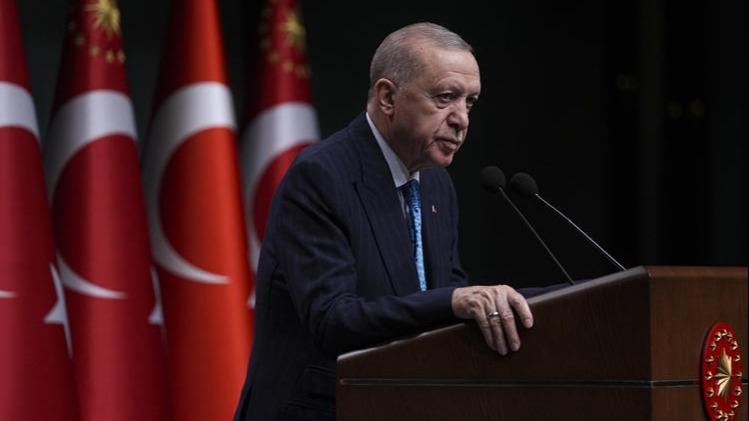Turkey's Mediation Proposal for Russia-Ukraine Conflict; Philippines Urges China to Abandon Territorial Claims; Latest on US-China Trade War; Nvidia's Latest Supercomputer

Turkey's Mediation Proposal for the Russia-Ukraine Conflict
The recent round of talks between Russia and Ukraine, as reported by CCTV and Sina, highlights a significant development: a mutual agreement to exchange prisoners, including over 1,000 soldiers, and the remains of deceased military personnel. Both stories emphasize the achievement of 'major results,' yet there's a subtle divergence in tone.
President Recep Tayyip Erdogan of Turkey has proposed hosting a summit involving Russian and Ukrainian leaders in Ankara or Istanbul to resolve the ongoing Russia-Ukraine conflict. Reports from CCTV and World Journal emphasize Erdogan's ambition to facilitate negotiations among the United States, Russia, and Ukraine. Erdogan's desire to include the U.S. underscores Turkey's strategic positioning on the global stage. Such mediation could stabilize regional tensions, but the alignment and interests of major powers, notably the U.S., remain a significant factor.
While CCTV emphasizes the success of Turkish President Erdogan's proposal for a high-level summit involving Russia, Ukraine, and the U.S., Sina focuses more on the operational aspects, detailing the practicalities of the exchange and the broader implications of the negotiations. CCTV underscores the Turkish diplomatic role, suggesting a possible shift towards a more multilateral resolution. This reflects Turkey's growing ambition to play an intermediary role in the region's geopolitics.
Geopolitical Dynamics in the Asia-Pacific
Heightened geopolitical tensions have also surfaced in the Asia-Pacific, with significant attention on maritime disputes in the South China Sea. The Philippines has urged China to abandon its territorial claims, particularly the "nine-dash line," as a gesture of good faith for defense collaboration, according to Tencent. The Philippines' stance adds complexity to Southeast Asian diplomatic relations, already under pressure from China's infrastructural expansions on contested islands.
Such demands reflect deeper regional anxieties over sovereignty and national security, often drawing U.S. involvement as a strategic ally. While China maintains historical claims, the Philippines' push is echoed by regional players wary of China's growing influence. These tensions underscore the strategic dance among Southeast Asian nations balancing economic ties with China against national security concerns.
Middle Eastern Conflicts and Global Responses
Regional violence in the Middle East remains a pressing global concern, particularly highlighted by attacks in Gaza that resulted in significant civilian casualties. United Nations Secretary-General Antonio Guterres has called for an independent investigation following attacks on aid distribution points, as reported by Sina. The incident underscores the volatility of the region and the humanitarian crises stemming from persistent conflict.
Moreover, the geopolitical landscape is further complicated by Iran's outright rejection of new U.S. proposals to resolve the nuclear dispute, deeming them "meaningless," according to Sina. Iran's firm stance reflects ongoing friction that exacerbates economic instability and influences global oil prices. Such dynamics demand a nuanced understanding of domestic pressures and international negotiations.
Economic Friction Between China and the US
Recently, China's Ministry of Commerce expressed dissatisfaction with the US for imposing new restrictions considered discriminatory against China. These actions, including export controls on AI chips and software, symbolize an escalation in the ongoing trade tensions between the two nations. The Ministry's assertive tone indicates China's resolve to safeguard its strategic interests, hinting at potential countermeasures should the US persist in implementing policies perceived as detrimental to Chinese interests. The emphasis here is on equality in the bilateral agreements, and China's stance is very much about pushing for a fairer trading environment. This narrative from Radio France Internationale (RFI) suggests a focus on balanced international relations while underscoring the impacts of these disputes on global tech supply chains.
China's insistence on corrective action from the US highlights the broader theme of these tensions: the competition for technological supremacy. The stakes in sectors such as AI and semiconductors are high, given their strategic importance. By examining these developments, one can see a strategic recalibration in policy that resonates beyond simple economics, impacting global markets and technological advancement pathways.
Reports by Sina detail that China has rejected U.S. sanctions and demanded the U.S. rectify its restrictive measures, which include export controls on AI chips and the halt of EDA software sales. Moreover, China has criticized U.S. measures it perceives as discriminatory, urging a return to cooperative dialogue to safeguard economic stability.
On a related note, stock indices showed positive movements as traders anticipate easing global trade pressures, spurred by a possible meeting between President Trump and President Xi Jinping, as mentioned in World Journal. Notably, Freedom Capital Markets' chief strategist expects any productive dialogue between the U.S. and China could mitigate uncertainties, fostering new market highs.
Ukraine's Technological Tactics and International Repercussions
Turning our gaze towards Eastern Europe, the narrative takes a dramatic turn. Ukraine's use of drones in a strategic attack labeled "Spider's Web" resonates as a significant technological feat. According to the same source, Ukraine's SBU used drones to successfully attack four Russian airbases, causing considerable damage. This action was lauded domestically and hailed as a declaration of Ukraine's capability in self-defense.
Interestingly, the strategic implications of this attack are vast. Not only does it showcase the increasing sophistication and autonomy of modern warfare technologies, but it also places Ukraine at a pivotal point in regional geopolitics. The broader implications suggest a shift in how smaller nations can assert themselves against traditional military powers. The juxtaposition of China's economic tactical approach against the backdrop of Ukraine's military tactics illuminates a world where technology is a critical leverage point, influencing global power balances.
The duality of these narratives from the RFI, a European vantage point, aims to provide an international understanding of the strategic rivalries at play—the economic maneuvers in Asia and the military developments in Europe. Together, they highlight a world in flux where technological efficacy often determines the boundary of power. Observers and stakeholders from around the globe are thus watching closely, understanding that these dynamics will inevitably shape future policy and geopolitical alliances.
NVIDIA has recently unveiled plans for their groundbreaking supercomputer, named "Doudna," which is poised to become the world's most powerful when it launches in 2026. Supported by the next-generation Quantum-X800 InfiniBand network, this device is set to catalyze advancements in scientific research, akin to a "time machine" in the scientific realm, as described by NVIDIA CEO, Jensen Huang.
Technological Advancements with Quantum-X800 InfiniBand
The Doudna supercomputer marks a significant technological leap with its integration of the Quantum-X800 InfiniBand network. This platform ensures a ninefold increase in data processing capabilities, which is crucial for handling challenging computational tasks and memory-intensive loads. For example, the network seamlessly manages data flows to ensure rapid and uninterrupted movement from input to deep analysis phases, enhancing system responsiveness dramatically.
NVIDIA aims to exploit these technological enhancements to drive future business opportunities, positioning itself and key suppliers like Broadcom as hidden victors. Broadcom, directly named as an optical communication provider at NVIDIA's GTC conference, is advancing its CPO technology, which could lead to substantial revenue increases by 2026.
Supply Chain Dynamics and Industry Impacts
Doudna's development underscores the intricate dance of supply chains and technological integration. For instance, NVIDIA's reliance on Broadcom for optical communication technology showcases the strategic partnerships essential for achieving such ambitious projects. This development aligns with Broadcom’s emphasis on rapidly advancing its CPO technology, expected to play a significant role in the large-scale production by 2026. This not only benefits NVIDIA but also propels associated suppliers into lucrative markets.
The complex web of suppliers, including Taiwan's I-Solution, reflects a nuanced strategy where components like Fiber Array Units (FAU) are crucial. As these components feed into scalable platforms, they compress development cycles, giving clients a competitive edge.
Global Implications and Forward-Looking Perspectives
This announcement heralds a broader impact on global scientific pursuits, particularly in fields requiring precision and scale, such as genome sequencing and telescope data processing. The integration with the U.S. Department of Energy's ESnet shows Doudna’s role in quickly transferring data from remote sensors and genetics, offering real-time analytic capabilities.
From an international perspective, the spread of advanced technologies like NVIDIA's Doudna can potentially democratize scientific computation, making high-level data processing more accessible globally. The shift could impact sectors ranging from academia to commercial research, influencing economic and geopolitical landscapes as nations with access to such technology gain an edge in scientific and technological innovation.
In conclusion, NVIDIA's upcoming supercomputer exemplifies the powerful intersection of cutting-edge network technologies and scientific ambition. As these systems begin to roll out globally, the cascading effects on research, business, and international cooperation will likely redefine the landscape of scientific computing.
For more details, visit the original article on World Journal.



